Charlie and Linnaea Wright are two researchers from US Fish and Wildlife out of Anchorage, AK. They spend most of their day on the bridge identifying and counting seabirds in order to collect a data set that shows abundance and distribution of different species. In order to do this, they have come up with a protocol that will help them paint an accurate picture of the bird population. They only count when the Healy is moving to avoid marking the same bird twice. Only birds that are 300m or closer to the ship are included in the data set. Counting and identifying animals on the move is very difficult, but these two are pros. Charlie and Linnaea have even been helping to find and record species of marine mammals for the marine mammal observation study.
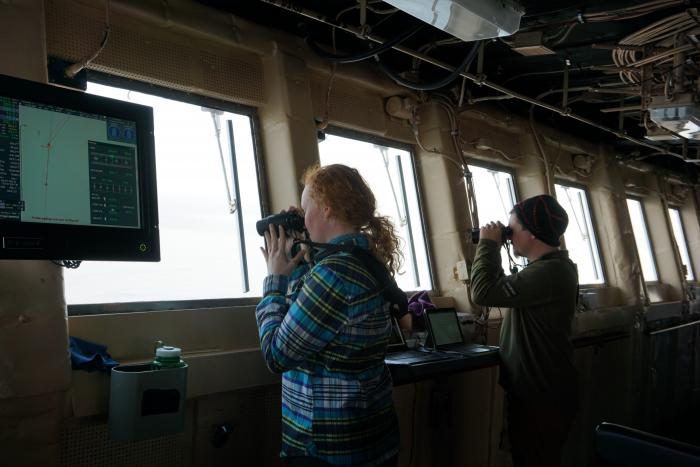 Charlie and Linnaea Wright of US Fish and Wildlife counting and identifying birds on the bridge of the Healy.
Charlie and Linnaea Wright of US Fish and Wildlife counting and identifying birds on the bridge of the Healy.
How do they know where the 300m mark is? They use a chop stick that they brought to show scale. Using trigonometry and factors such as their height, height of the bridge, and arm length, they have marked the stick so that when they hold it up to the horizon, they can show distance from the ship.
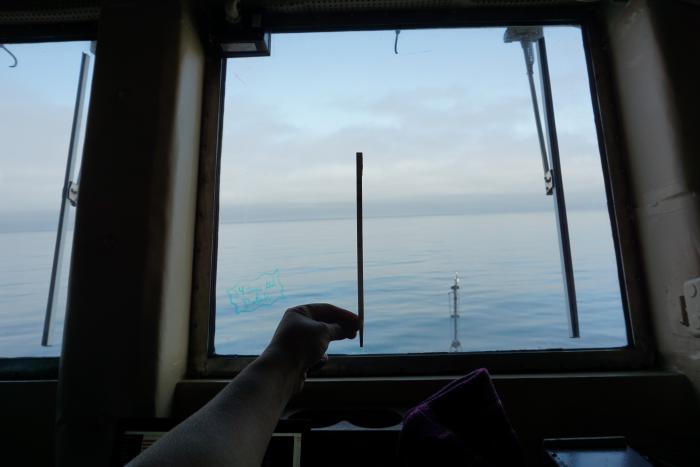 The chopstick that Charlie and Linnaea Wright use to guage distance from the boat.
The chopstick that Charlie and Linnaea Wright use to guage distance from the boat.
Charlie and Linnaea said this year is particularly interesting because there was a large bird die off in the area due to starvation. I asked the Wrights why and even though they know it is due to starvation, it is hard to identify the cause. It could be a range of issues including disease, lack of food availability, storms physically keeping seabirds from reaching food, or a combination of these factors. Scientists are currently performing necropsies on dead birds that are found to try to determine what it happening.
We passed St. Lawrence Island in the Bering Sea, which is a prime spot to bird watch due to the large colonies there. Some of the seabirds we have been seeing from the ship are murres, puffins, and auklets. Both species of Puffins, the Tufted Puffin and the Horned Puffin, have very short wings that are adapted for swimming underwater to hunt for food. This also means that they aren't particularly good at flying. Watching them beside the boat, they flap their wings quickly (up to 400 times per minute!) and stay low to the water.
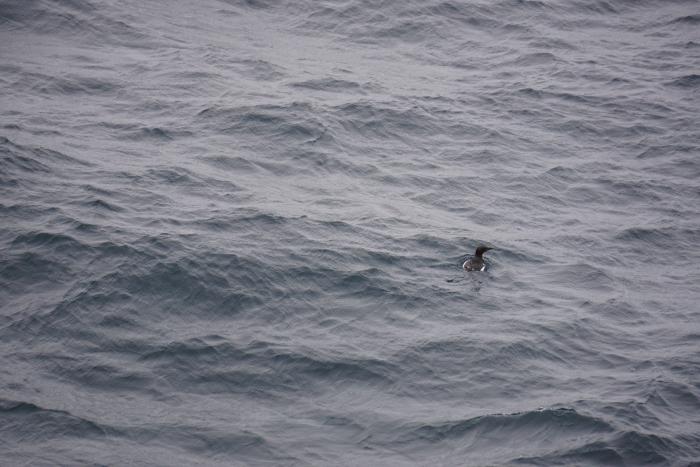 The common murre on the water next to the Healy.
The common murre on the water next to the Healy.
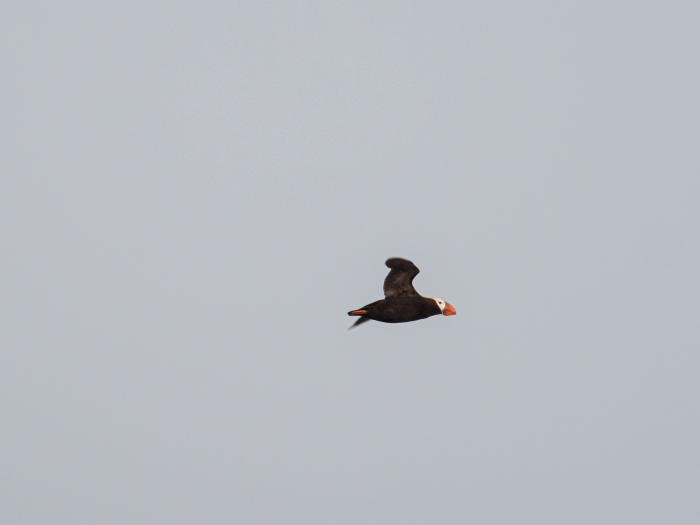 The Tufted Puffin in flight. (Photo courtesy of Lindsey Leigh Graham)
The Tufted Puffin in flight. (Photo courtesy of Lindsey Leigh Graham)
Charlie and Linnaea have also seen two species of auklets. The small Least Auklet is speckled black and white while the Crested Auklet is slightly bigger and has a forehead crest. The Crested Auklet has glands on its neck that make it smell like tangerine and these birds, in large colonies, often emit that odor. As the Healy finishes DBO-1 and heads back north towards St. Lawrence Island, the ship will be passing past the town of Gamble to the east and past many more birds!
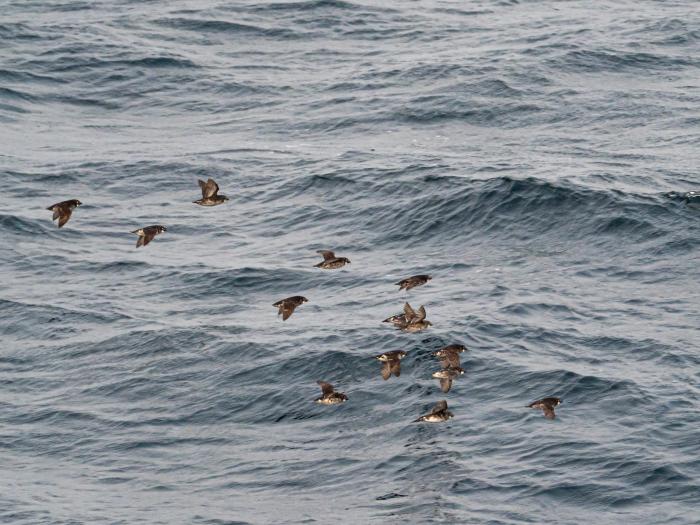 A group of Least Auklets flies beside the Healy. (Photo courtesy of Lindsey Leigh Graham)
A group of Least Auklets flies beside the Healy. (Photo courtesy of Lindsey Leigh Graham)
A special thank you to Lindsey Graham, a professional photographer from Charleston, SC for sharing a few of her amazing bird photos!
A Question From the Crow's Nest
Which of the three seabirds mentioned in this post lays a blue and brown-speckled egg?
Answer from previous post: Niskin bottles need to be opened before be lowered into the deep depths because if they are kept close, the pressure will cause them to implode.


Comments
Add new comment